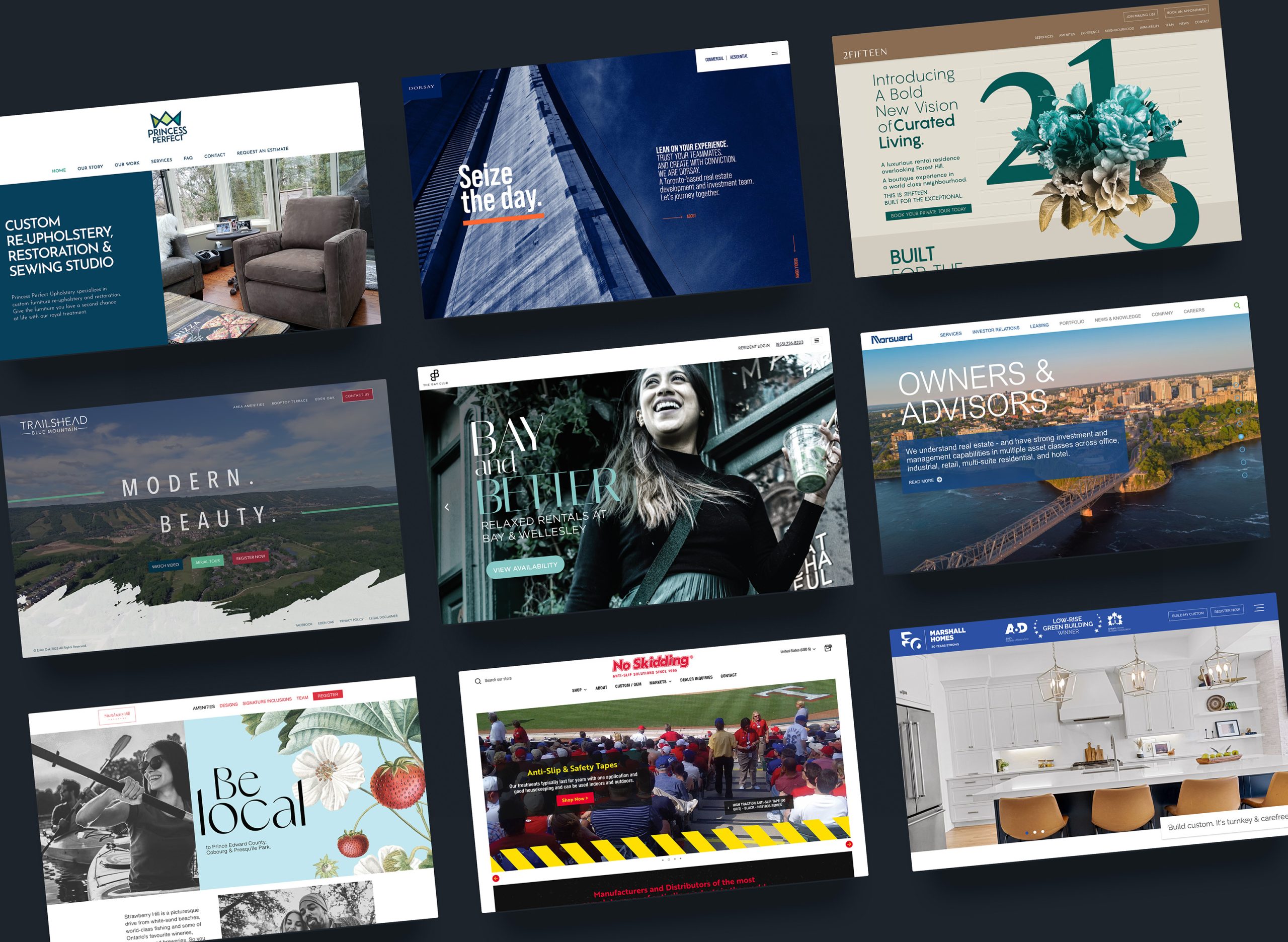Is It Time to Redesign Your Website? Key Signs You Need a Fresh Look and Better UX
Posted on Wednesday December 20, 2023

In today’s tech-centric landscape, a visually appealing and user-friendly website is crucial.A website’s design not only reflects the brand identity but also plays a crucial role in enhancing user experience (UX) and contributing to overall business success. In this blog post, we will delve into the signs that indicate it’s time for a website redesign, exploring the impact of design on user engagement and satisfaction.
Signs It’s Time for a Website Redesign
Outdated Design
Website development trends evolve rapidly, and an outdated design can be detrimental to a brand’s image. Staying current with design trends is not just a matter of aesthetics but also a strategic move to capture and retain the attention of your audience. Outdated design elements, such as clunky graphics or an obsolete color palette, can negatively impact brand perception, deterring potential customers from engaging with your website.
Poor User Engagement
User engagement is a critical metric in website development, encompassing factors like bounce rate and time spent on site. Monitoring these metrics provides valuable insights into how visitors interact with your site. A poorly designed website may result in low user engagement, causing visitors to leave quickly or spend minimal time navigating your pages. Recognizing the connection between design and user interaction is crucial for optimizing the overall UX.
High Bounce Rates
Understanding bounce rates is essential for evaluating the effectiveness of your website. A high bounce rate indicates that visitors are leaving your site shortly after arriving, suggesting a potential mismatch between user expectations and your website’s content or design. Bounce rates related to design can be attributed to slow load times, unresponsive layouts, or unappealing visuals. Reducing bounce rates often requires a strategic redesign aimed at addressing these issues. The probability of bounce increases 32% as page load time goes from 1 second to 3 seconds.
Mobile Responsiveness Issues
With the increasing prevalence of mobile users, ensuring mobile responsiveness is no longer an option but a necessity in website development. Signs of poor mobile responsiveness include distorted layouts, slow loading on mobile devices, or a lack of optimized features for smaller screens. A responsive design not only improves the user experience but also positively impacts SEO, as search engines prioritize mobile-friendly websites.
Slow Page Load Times
Page load speed is a crucial factor in website development, influencing both user experience and search engine rankings. Slow-loading pages can lead to frustration and increased bounce rates. Tools like Google PageSpeed Insights can help identify areas for improvement. A faster website not only enhances UX but also contributes to improved SEO performance. A one-second delay in page load time can result up to a 20% reduction in conversions.
Decline in Conversion Rates
Conversion rates are a key indicator of a website’s effectiveness in turning visitors into customers. If your conversion rates are declining, it may be a sign that your website design is not effectively guiding users through the conversion funnel. A strategic redesign can optimize the layout, calls-to-action, and overall user flow to improve conversion pathways.
Benefits of a Website Redesign
Enhanced User Experience (UX)
A positive user experience is the cornerstone of a successful website. A fresh design contributes significantly to this, offering users a visually appealing and intuitive interface. Elements such as clear navigation, engaging visuals, and an overall user-centric design create an environment that encourages prolonged user engagement and satisfaction. Websites with a strong user experience can have a conversion rate that is 400% higher than those without.
Improved SEO Performance
Search engines prioritize user-friendly websites in their rankings. A well-designed website is more likely to have lower bounce rates and higher engagement metrics, signaling to search engines that the content is relevant and valuable. This positive user behavior contributes to improved search engine rankings.
SEO-Friendly Design Elements to Incorporate in a Redesign
Incorporating SEO-friendly design elements is crucial for optimizing your website’s visibility. This includes strategic placement of keywords, proper use of heading tags, and creating a clear site structure. Mobile responsiveness and fast page load times, both influenced by design, are also factors that search engines consider in rankings.
Competitive Edge
In the bustling world of web development, standing out is a constant challenge. A website redesign provides an opportunity to stay ahead of competitors by incorporating the latest design trends and technologies. This not only attracts users but also positions your brand as forward-thinking and responsive to industry changes.
Strategies to Stand Out Through Design Innovation
Innovation in design can set your website apart. Whether it’s adopting unique visual elements, interactive features, or a distinctive brand identity, incorporating innovative design strategies can capture and retain user attention. Consistently reassessing and updating your design ensures that your website remains a relevant and influential player in your industry.
Adaptation to Technological Advances
Technological advances shape the way users interact with websites. Embracing these advances through a redesign allows for the integration of cutting-edge technologies. From AI-powered chatbots to responsive design frameworks, staying technologically current enhances the overall user experience.
Integrating AI, Chatbots, and Other Emerging Trends
The integration of artificial intelligence (AI) and chatbots can revolutionize user interactions on your website. These technologies provide personalized experiences, streamline customer service, and contribute to a more dynamic and engaging website. Incorporating such trends in your redesign demonstrates a commitment to innovation.
Future-Proofing the Website Through Adaptive Design
Adaptive design involves creating a flexible and scalable framework that can seamlessly incorporate future technological advancements. This forward-thinking approach ensures that your website remains relevant and functional as technologies evolve, mitigating the need for frequent large-scale redesigns.
How Long Does It Take to Redesign a Website?
The duration of a website redesign varies based on factors such as the complexity of the project, the size of the website, and the extent of changes required. On average, a website redesign can take anywhere from a few weeks to several months. It involves planning, design iterations, development, testing, and implementation. The key is to balance thoroughness with efficiency to ensure a seamless transition and minimal downtime.
While speed is valuable, a thoughtful and well-paced website development timeline is equally essential. Incorporating user feedback and making iterative design adjustments may add some time, but it is invaluable for creating a final product that resonates with the target audience. A well-executed redesign aligns the website with evolving business objectives and industry standards, ensuring it remains a dynamic and effective digital asset.
Conclusion
From the unmistakable signals of outdated design to the nuanced metrics of user engagement and conversion rates, the signs prompting a website redesign are diverse. Each aspect, whether it’s a mobile responsiveness issue, slow page load times, or a decline in conversion rates, contributes to an overarching narrative of a website in need of rejuvenation. Recognizing these signs early on positions businesses to proactively address challenges and stay ahead in the competitive landscape of web development.
A website redesign is not merely a cosmetic facelift; it’s a strategic investment in elevating user experience and optimizing for search engines. The incorporation of modern design elements, intuitive navigation, and responsive layouts contributes to a positive UX, fostering user satisfaction and prolonged engagement. Simultaneously, the impact on SEO is profound, as search engines prioritize well-designed, user-friendly websites in their rankings. The benefits extend beyond aesthetics, influencing the very core of how a website interacts with its audience and performs in the competitive online landscape.
Ready to embark on a transformative website redesign journey? Contact Madhouse Advertising, an award-winning digital design agency located in Toronto. Our team of experts specializes in creating visually stunning and highly functional websites that elevate your brand and captivate your audience. Contact us today to discuss how we can bring your vision to life and propel your online presence to new heights. Your website’s next chapter begins with Madhouse Advertising.
ALL POSTS


